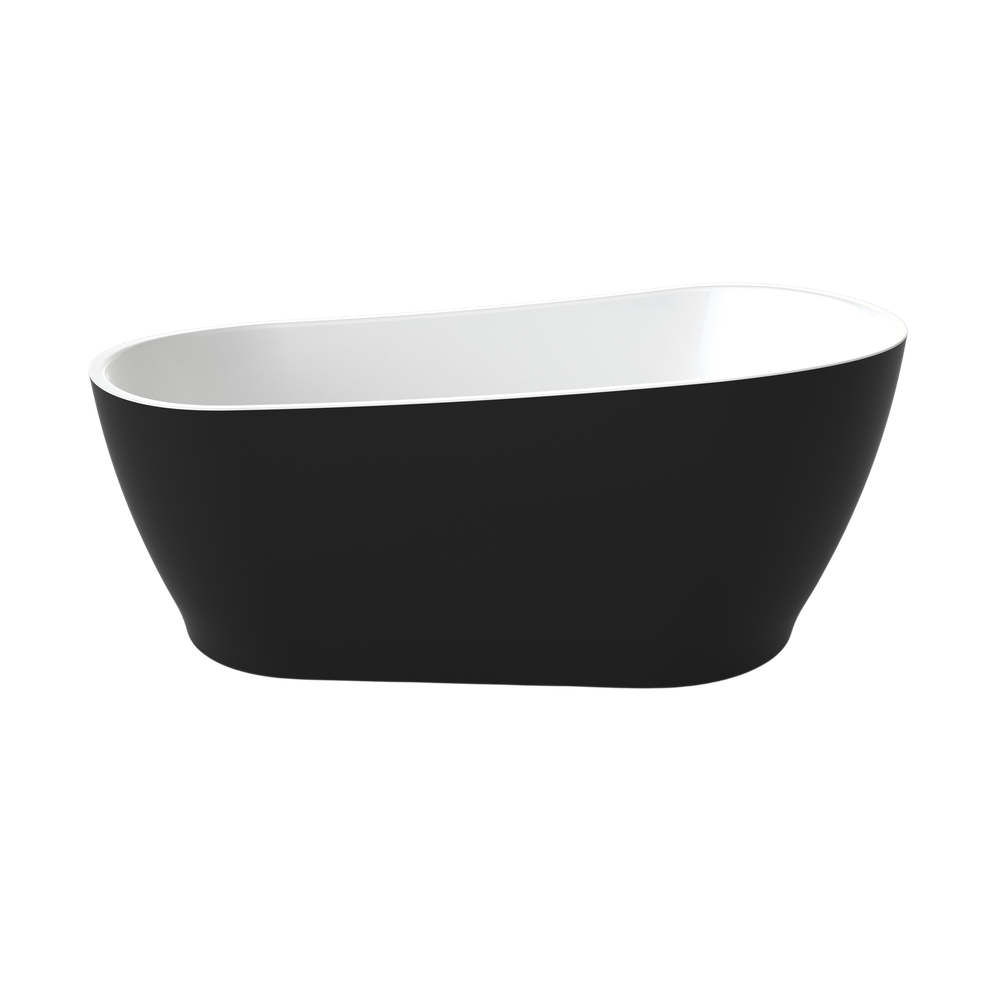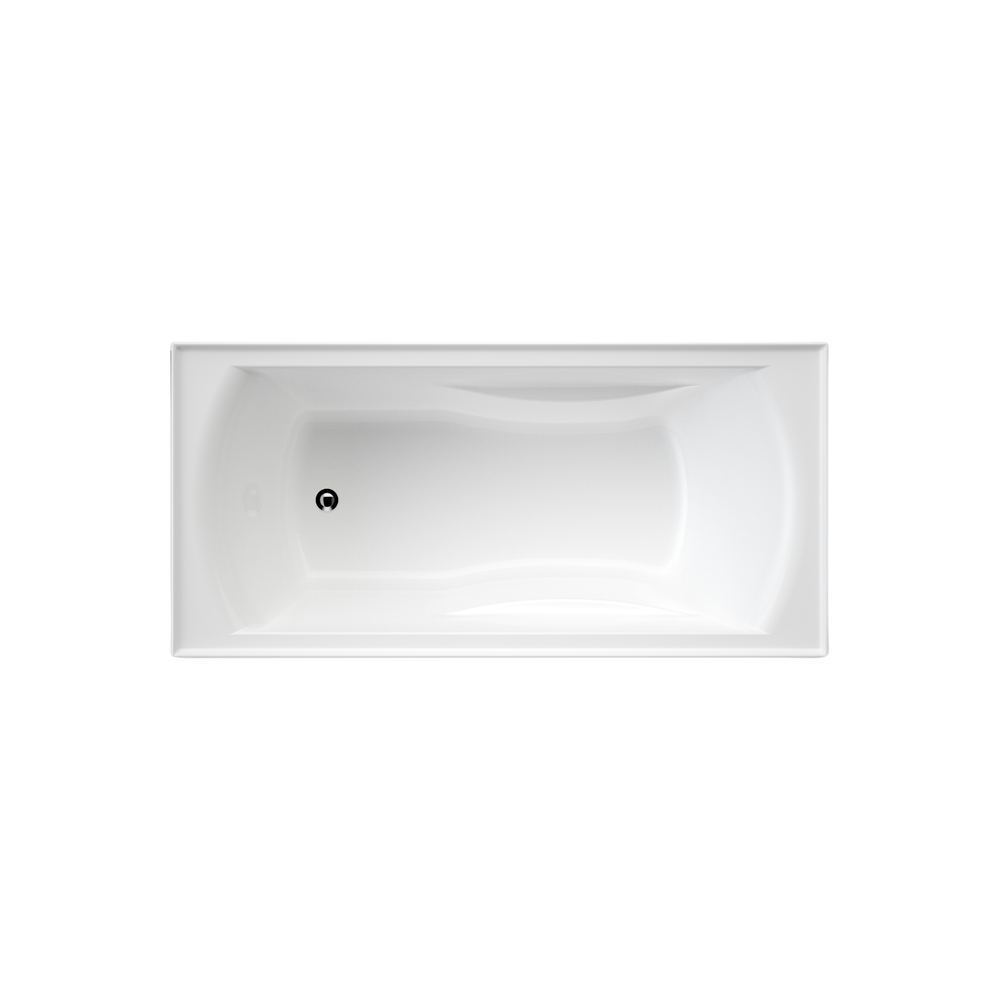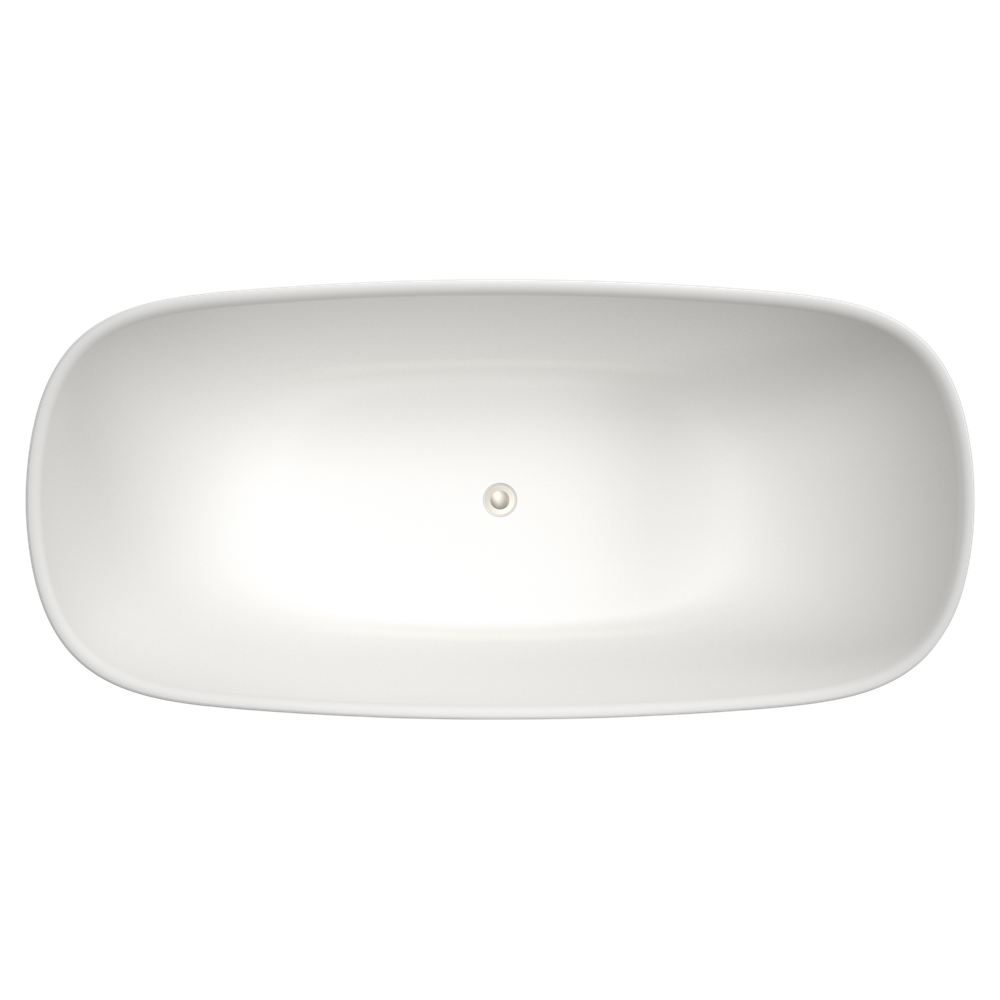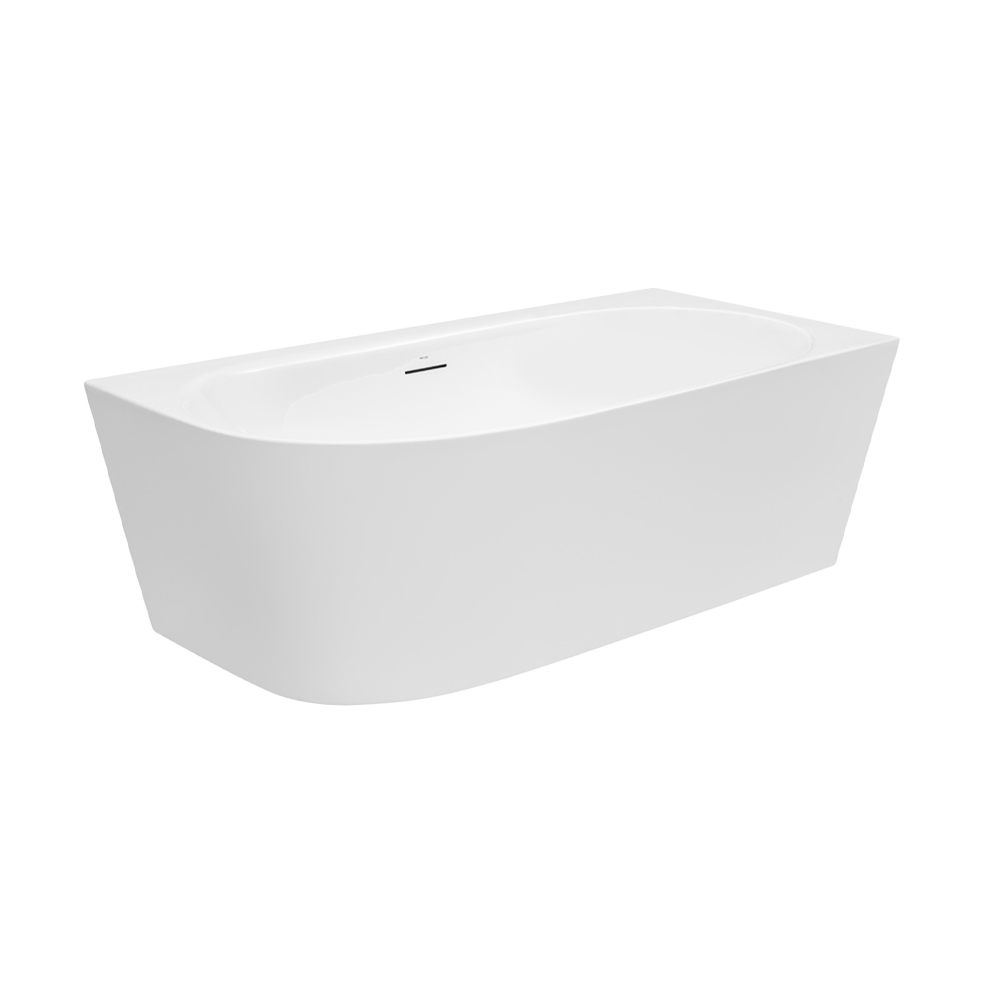Buying Baths: 5 Things to Consider to Help You Choose
Buying a bath isn’t just about looks. This guide breaks down the 5 most important things to consider (style, size, material, comfort, and care) so you get it right the first time.
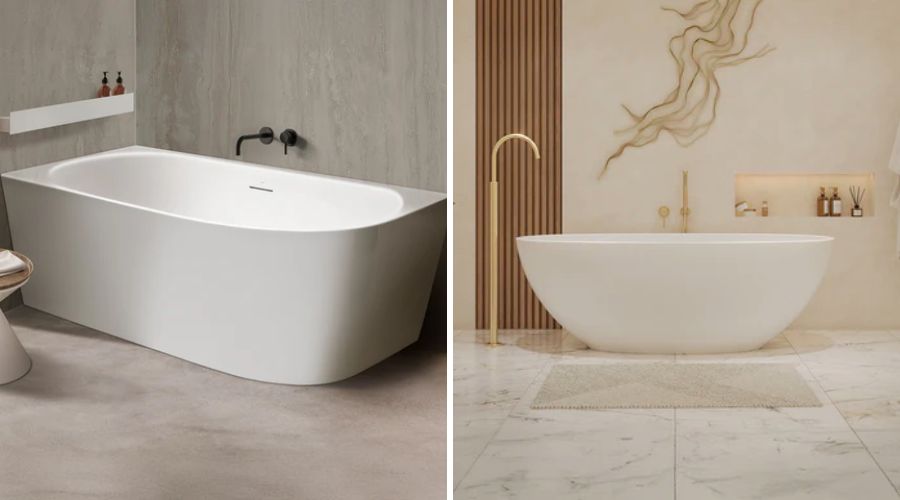
Everyone deserves a bathtub that becomes their favourite place to unwind. Yet, buying the right bathtub isn’t just about picking what looks pretty; choosing well comes down to thoughtful decisions that suit your home, lifestyle and taste. This guide breaks down five key things to consider when buying a new bathtub for your home.
Shop the Nero Freestanding Solid Surface Bathtub
1. Bath Types: Which Style and Size Suits Your Space?
Freestanding baths make a statement and give you design flexibility
If you’ve got a bit of room to play with, a freestanding bath gives you that spacious, spa-like feel. You can place it away from walls (as long as plumbing allows), and it instantly becomes the focal point of the room.
Inset baths are ideal for tighter spaces and tiled surrounds
If your bathroom’s on the smaller side, inset (or drop-in) tubs sit neatly into a hob or frame, giving you more ledge space and a cleaner edge. They’re easy to clean and work well in family bathrooms or renovations.
→ See more in the inset bath range or explore the island bath range if you want something tiled in.
Back-to-wall baths give you a freestanding look without the extra cleaning
Back-to-wall baths sit flush against the wall, which means less dusting behind the tub, but you still get that modern, sculptural silhouette. You’ll get a clean, contemporary finish with a small footprint.
Corner baths work in awkward layouts and free up floor space
Corner bath tubs are bathrooms where space is tight or the layout doesn’t suit a standard tub. By tucking into the corner, they leave more room to move around, and they often feel more cocoon-like when you’re soaking.
Shop the Decina Natalia Acrylic Freestanding Bathub
2. Bath Materials: What’s the Best Bath Tub Material?
The material your bath is made from affects how it feels to sit in, how well it holds heat, how easy it is to clean, and whether it’s going to be a hassle to install. Here’s what to know:
Acrylic is warm, lightweight and renovation-friendly
If you’re updating an existing bathroom or working upstairs, acrylic bathtubs are often the easiest choice. They’re lighter than stone, quick to install, and they keep bathwater warm longer than steel. Plus, they come in a wide range of shapes and sizes.
Solid surface and stone feel premium and hold heat longer
For something that feels a bit more luxurious, stone bathtubs or solid surface baths give you that weighty, sculptural presence. They’re smooth to the touch and keep water warm for longer sessions — great if you’re a long-soak kind of person. Just keep in mind the extra weight may require floor reinforcement.
Enamelled steel is sturdy and classic, but not as warm
Steel baths are durable and easy to clean, and they suit a more traditional bathroom style. But they can feel colder when you hop in and don’t hold heat as well as acrylic or stone. Best if you love that clean, minimal look and don’t mind a slightly brisker soak.
Quick tip: If you’re tossing up between acrylic and stone, think about your subfloor, who will be using the bath, and how often you’ll use it. Acrylic is practical and affordable. Stone feels luxe but needs a bit more planning.
3. Size and Shape: What Bath Tub Size is Best?
A bath can look beautiful online, but if it doesn’t fit your space or your body, it’ll quickly become frustrating. Before you get attached to a design, measure everything: your floorplan, doorways, and plumbing layout. Then think about how the bath will actually be used.
If you're tall, go for extra internal length. If mobility is a concern, look for a lower profile or something with integrated support. And if space is tight, smart design makes a big difference.
For small bathrooms
You’ll want something compact that still feels functional. Corner baths are great for layouts that can’t handle a standard rectangular tub, while back-to-wall bathtubs maximise every inch by sitting flush against the wall.
For a more luxurious soak
If you’ve got the room, a deep freestanding bath gives you full stretch-out comfort, great for relaxing at the end of the day. Freestanding baths often offer generous depth and a sculptural design that suits modern bathrooms.
→ Explore our large bathtubs and deep bathtubs
Ask the experts: What’s a standard bathtub size?
In Australia, the standard bathtub size is around 1500mm to 1700mm long, 700mm to 800mm wide, and about 400mm to 450mm deep. That’s a good fit for most people and most bathrooms, long enough to stretch out a bit, but compact enough to suit typical layouts.
If you’re short on space, a 1400mm back-to-wall bath can still work comfortably. For a more luxurious feel, many freestanding baths go up to 1800mm or more, with added depth for full-body soaking.
Just remember: always check your internal measurements (not just outside dimensions) to make sure it works for you and your space.
Shop the Alma Freestanding Floor Spout in Brushed Brass Gold
4. Choose the Right Bath Tapware
The tapware you choose affects how your bath functions and how the whole space feels. Here's a quick guide to help you narrow it down, based on function, form, and finish.
Bath Tap Styles
- Freestanding bath taps are ideal for freestanding tubs. Floor-mounted and sculptural, they work well when your bath is placed away from the wall and you want that luxury hotel feel.
- Wall mounted bath taps are great for back-to-wall or inset baths. They free up space around the edge of your bath and make cleaning easier.
- Gooseneck spouts offer a tall, curved shape and work beautifully with minimal or curved bath designs.
- Swivel bath spouts are practical and perfect for compact spaces — swivel them out of the way when not in use.
- Bath taps with hose are great if you want flexibility — for rinsing hair, cleaning the tub, or washing kids and pets.
Bath Tap Finish Options
- Brushed nickel is soft and warm-toned — ideal if you’re going for a timeless or organic look.
- Chrome is classic, easy to match, and usually the most budget-friendly.
- Black bath tapware gives a strong, modern contrast — especially striking against light tiles.
- Brushed brass adds a hit of warmth and works beautifully with timber vanities or terrazzo finishes.
Explore Bath Taps by Brand
Prefer to keep it simple? Stick to a single design range:
- ADP Tapware: clean lines, modern finishes, and compatible across multiple bath types.
- Caroma Tapware: durable, family-friendly, and easy to pair with Caroma baths.
- Oliveri Tapware: known for sleek, modern silhouettes and quality performance.
- Johnson Suisse: chrome-finish basics with a sharp edge.
- Alma: design-forward and cohesive, ideal for full bathroom sets.
→ If you want to avoid mixing and matching entirely, stick to a unified bath tapware collection where everything’s been designed to work together.
5. Will This Bath Still Work for You in 5–10 Years?
It’s easy to design for now, but bathrooms last a long time, and so should your bath. Think about who will be using it down the line.
- Planning a family? Choose a durable, easy-to-clean model like an inset acrylic bath with rounded edges and enough room for kids’ bath time.
- Getting older or renovating for parents? Look for a bath with a lower profile or pair it with bath taps with hose to make rinsing easier.
- Considering resale value? A freestanding bath can boost perceived value in modern homes and appeal to more buyers.
A bit of forward thinking can save you from a costly re-do in a few years, and make your bath a better fit as life changes.
Best Selling Bathtubs at Buildmat
If you're after what other renovators and designers are loving right now, here are some of the most popular bathtubs at Buildmat, plus tips on how to pair them for maximum effect.
For a family en suites
The Caroma Noir 1700 Freestanding Bath in Black makes a bold statement, especially when paired with brushed gold tapware or warm timber vanities. Great in a modern or industrial-style space.
Caroma Noir 1700 Freestanding Bath Black
Shop Now..
For a compact luxury soak
The Maxton 1525 Back-to-Wall Bath in White fits neatly in smaller bathrooms without skimping on depth or comfort. Works well with chrome tapware for a clean, timeless finish.
Caroma Maxton 1525 Bath White
Shop Now..
For curved, architectural lines
If you want soft edges and visual flow, the Contura II 1700 Freestanding Bath in Matte White brings sculptural elegance. Try pairing it with brushed carbon tapware to add contrast without harshness.
For smart corner use (and small bathrooms)
The Decina 1500mm Natalia Back-to-Corner Freestanding Bath fits neatly into right-angled layouts — ideal if you're working with awkward walls or tighter footprints. Pair it with a wall-mounted brushed nickel spout for a subtle luxe touch.
Buy Baths Online at Buildmat
Whether you're renovating, upsizing, or just dreaming of longer soaks, Buildmat has a full range of quality tubs to suit your space, style, and budget.
👉 Explore all bathtubs at Buildmat
From compact back-to-wall options to sculptural freestanding centrepieces, you’ll find something that fits and lasts.
Bathroom & Buying Baths Inspo Articles
Need more help buying baths? Here are our top articles to help you make a decision.
- Freestanding Bathtubs vs Drop-In Bathtubs: What’s the Difference and What’s Best?
- Which Bath Tap Should You Choose? A Look at Styles, Finishes and Features
-
Matching Your Bathtub with Tapware: The Ultimate Style Guide
FAQs
How heavy are freestanding baths?
It depends on the material. Acrylic freestanding baths typically weigh between 40–60kg and are easy to install. Stone and solid surface baths can weigh over 100kg and might need floor reinforcement. Always check your floor’s load capacity, especially for upstairs bathrooms.
Can I install a bath myself?
If you’re handy, you can prep the space, but installation is best left to a licensed plumber. They’ll ensure proper leveling, drainage, sealing and compliance with building codes. This is especially important for freestanding and back-to-wall models that require secure bracing or specific waste placement.
What’s better for resale value: freestanding or built-in?
Freestanding baths often add perceived value, especially in master suites or new builds. They create a more luxurious, modern look. But in smaller family bathrooms, a built-in or back-to-wall option may be more practical (and appealing to future buyers with kids).
Do all baths come with a waste and overflow?
Not always — and it can catch people out. Many baths are sold without a waste kit or plug, so check the product description carefully. You can shop Buildmat’s bath waste collection to match your model and finish.
What type of bath is easiest to clean?
Inset and back-to-wall baths are generally easier to clean around with no gaps behind them for dust or mould to build up. Matte finishes or textured stone can take a little more effort to maintain than gloss acrylic, but regular wipe-downs keep any bath looking good.
























































































































































































































